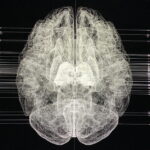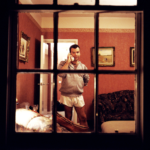For my final outcome, I was keen to utilise the idea I gained from my artist research of the Japanese artist Ryoji Ikeda, whose use of digitally acquired sounds inspired me to create a soundscape which represented electronic signals travelling through the brain as memories are recorded. Taking inspiration from sounds of the city, which I acquired from my sound walks I took at the beginning of this project, I attempted to overlay these sounds on top of Ikeda’s audio file from ‘Data-Verse 1’ (2019), in order to act as triggers for memories inside the brain. As well as utilising the digital sounds from Ikeda’s work, I also gained audio of static radio noises, scratchings from a record player and typing on a keyboard to enhance the sounds which mirror the brain ‘scanning’ a digital database of memories, triggered by certain sounds.
I chose these sounds from the city, based off what I viewed as significant to most individuals during their lifetime: waves lapping onto a beach, children laughing and playing, rubbish trucks and lorries driving through the city etc. I also chose some sounds from core memories from my childhood, in particular from videos of my siblings and I on holiday and sounds from the London Underground, which act as strong triggers for certain memories for me as an individual. Within this audio, I deliberately made some sounds more stagnated and sudden than others, in order to mirror the chaotic nature of the brain when ‘sifting’ through memories, and to resembled the ‘jumbled’ nature of memories as life progresses.
I have downloaded the audio file from Audacity to Soundcloud and have posted the link here. The audio should be listened to with earphones in order to completely immerse the listener.




